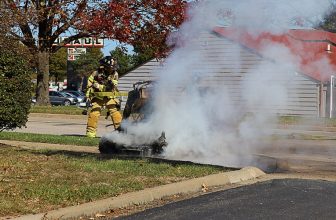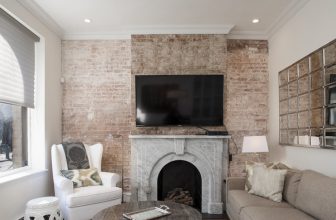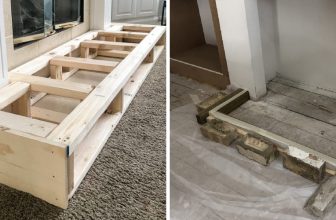How to Limewash Brick Fireplace
Limewashing your brick fireplace can help to create a beautiful, timeless look. The process of limewashing is simple and effective, allowing you to transform an existing brick fireplace into something that looks like it came straight from the pages of a magazine.
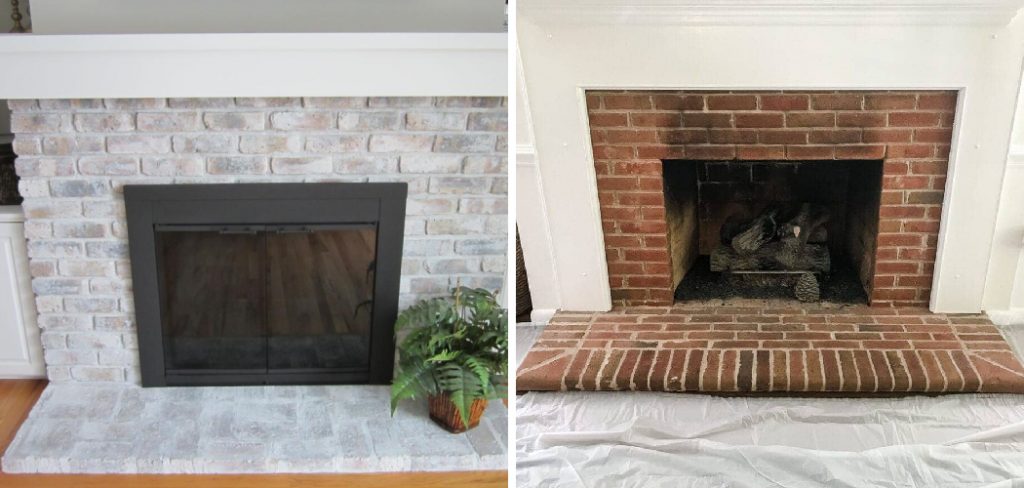
One of the main advantages of limewashing a brick fireplace is that it can cover up existing flaws or discolorations in the brick. Limewash is also much less expensive than paint and requires no sanding. The result looks like an aged, worn-in look which many people prefer as it gives their fireplace a unique charm. In this blog post, You will learn how to limewash brick fireplace.
Step-by-Step Processes for How to Limewash Brick Fireplace
Step 1: Inspect the Brick Fireplace
Before starting the limewashing process, it is important to ensure your existing brick fireplace is in good condition. Look for loose or damaged bricks and mortar joints. If there are any signs of damage, repair them before proceeding with the limewash project.
Step 2: Prepare the Brick Fireplace for Limewashing
Before you begin limewashing, cleaning the brick fireplace thoroughly is important. Use a mild detergent and warm water and scrub away any dirt or debris from the surface of the brick. Allow the bricks to air dry completely. Mix your limewash with a ratio of 2 parts water to 1 part lime powder. Add in any pigments or additives as desired. Make sure the mixture is thoroughly mixed and there are no lumps.
Step 3: Apply the Limewash
Using a brush, apply your limewash to the brick fireplace, ensuring you work in small sections at a time. Start from the top of the fireplace and work downwards. As you go along, blend the sections so there is no obvious line between them. Allow your limewashed brick fireplace to dry for at least 24 hours before applying a second coat of limewash.
Step 4: Apply a Second Coat of Limewash
Once your first layer of limewash has dried, you can apply a second coat of limewash. Allow this layer to dry again for at least 24 hours. You can also delimewash the brick fireplace using a slightly acidic solution like white vinegar and water. This will help to strip away any excess lime that may have been left behind.
Step 5: Rinse the Brick Fireplace
After delimewashing, you will need to rinse off the brick fireplace with clean water. Make sure that any leftover limewash and debris are completely removed before proceeding. Once your brick fireplace has been thoroughly rinsed, it is time to seal it. There are a variety of water-based and oil-based sealers available that can be used for this purpose.

After following all the steps, your brick fireplace should look freshly limewashed.
Precautions for How to Limewash Brick Fireplace
- Before you start limewashing your brick fireplace, make sure the area is cleared of any flammable items or materials that could be damaged by water and paint.
- Wear safety goggles and gloves to protect yourself from skin irritation or eye damage when working with lime wash.
- When using any type of paint or coating, it’s important to wear a respirator to protect yourself from breathing in harmful fumes and particles that can be released into the air when applying lime wash.
- Properly diluting your limewash before application is essential for a successful job. The dilution ratio can vary depending on the size of the brick surface you are working with, as well as the material’s porosity.
- Before beginning to apply your lime wash solution, it is important to lightly dampen the area to which you will be applying it for it to adhere properly.
- Before applying your lime wash solution to the entire area, it’s important to test a small section first to ensure you get the desired color and finish before applying it all over. This step is significant if you are mixing different colors of lime wash.
By following these tips/precautions, you can ensure a successful limewashing of your brick fireplace. You can create a beautiful and unique finish for your fireplace with the right safety gear and proper dilution techniques.
Are There Any Environmental Concerns When Using Limewash on a Brick Fireplace?
When using limewash on a brick fireplace, there are no environmental concerns as long as the correct painting materials and techniques are used. To ensure proper coverage, the paint should be applied in thin layers with a brush or roller.
In addition, make sure the paint is allowed to dry before applying each new layer so that it does not run or drip onto the surrounding surfaces. Using the correct tools and techniques will help ensure your limewash job is effective and efficient without creating environmental concerns.

Suppose you are concerned about the potential environmental impacts of using limewash on a brick fireplace. In that case, it is best to speak with a professional painter or contractor who can provide advice and guidance on using limewash in your home safely. These professionals can also provide tips on properly disposing of unused paint or materials from your project, further reducing the risk of environmental contamination.
How Do You Clean Up After Applying the Limewash to Your Brick Fireplace?
After applying the limewash to your brick fireplace, cleaning up and maintaining the surface is important. Before you start cleaning, make sure the limewash is completely dry. Once this has been established, use a damp cloth or sponge to wipe down the area where you applied the limewash lightly.
This will remove any dust or debris accumulated during the application process. For more stubborn stains or areas, you may need to use a mild detergent and water to remove them.
Once all debris is removed, it’s time to seal the surface of your brick fireplace. Applying a sealant will help protect the limewash from dirt and moisture so that it lasts longer. You can find sealants designed for brick fireplaces at most hardware and home improvement stores.
Once your brick fireplace has been sealed, it’s important to ensure you keep it in good condition. Regularly dusting or wiping down the area can help prevent dirt from accumulating on the surface of the limewash.
What is the Best Way to Clean the Brick After Applying Limewash?
Once you have finished applying the limewash to your brick fireplace, cleaning the brick before allowing it to dry is important. This will help ensure that your limewashed brick looks its best and remains in great condition for many years. A high-pressure power washer is the best way to clean a brick fireplace after applying limewash. This cleaning method can be done quickly and does not require harsh chemicals or abrasives.
Be sure to start at a lower pressure setting, gradually increasing the pressure as needed until all dirt and debris are removed from the brick surface. You should also consider using a soft-bristled brush when cleaning your limewashed brick. This will help remove any stubborn dirt and debris the power washer may have missed. Be sure to use gentle motions not to damage the limewash or the underlying brick surface.
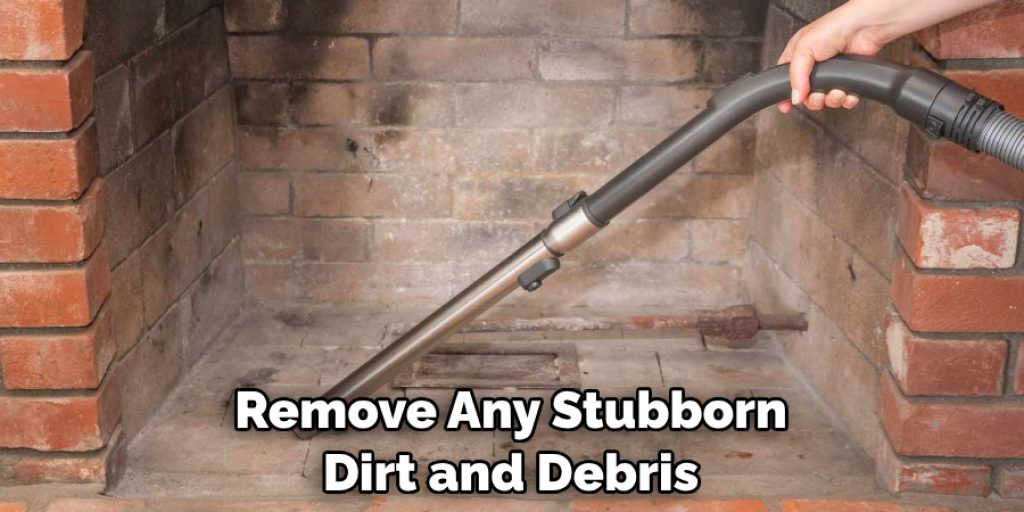
Once you have finished power washing and brushing your limewashed brick, it is important to fully dry the surface before adding a sealant. Using a towel, gently pat dry the brick before allowing it to air dry for 1-2 days.
Are There Any Special Considerations When Removing Old Limewash From Your Brick Fireplace?
Yes, there are a few special considerations to remember when removing old limewash from your brick fireplace. Depending on how much limewash was previously applied, you may need to use muriatic acid or TSP to help break down the material. Ensure you take all necessary safety precautions when working with these materials and wear protective equipment such as gloves, eyewear, and a respirator.
Additionally, suppose there is any food or organic material trapped between the bricks of your fireplace. In that case, you may need to use a stiff brush to thoroughly remove it before beginning the limewash removal process. This step is essential in preventing mold growth behind the new limewash.
Finally, ensure that any grout or mortar that the removal of old limewash has exposed is completely scraped away. This will ensure an even surface for you to apply your new limewash. Follow these tips, and you’ll be sure to have a beautiful brick fireplace with a fresh and vibrant limewash finish.
Are Any Potential Hazards Associated With Using Lime-based Products on a Brick Fireplace?
Due to the high pH levels of lime-based products, certain safety precautions must be taken to ensure that a limewash brick fireplace is safe and healthy. Lime-based products can cause skin irritation and respiratory issues if not used properly, so it’s important to take all necessary steps for safety. First and foremost, always wear protective gloves and a face mask while preparing and applying limewash.
This will help protect your skin from the alkaline compounds in the mixture and minimize any potential inhalation of hazardous particles. Additionally, it is important to ensure that all areas around the fireplace are well-ventilated to reduce any potential exposure to fumes or dust from the application process.
It is also important to use a lime-safe brush for the job to reduce any potential damage that metal bristles could cause. In addition, make sure that you are using the highest quality limewash available and that it has been mixed properly before application.
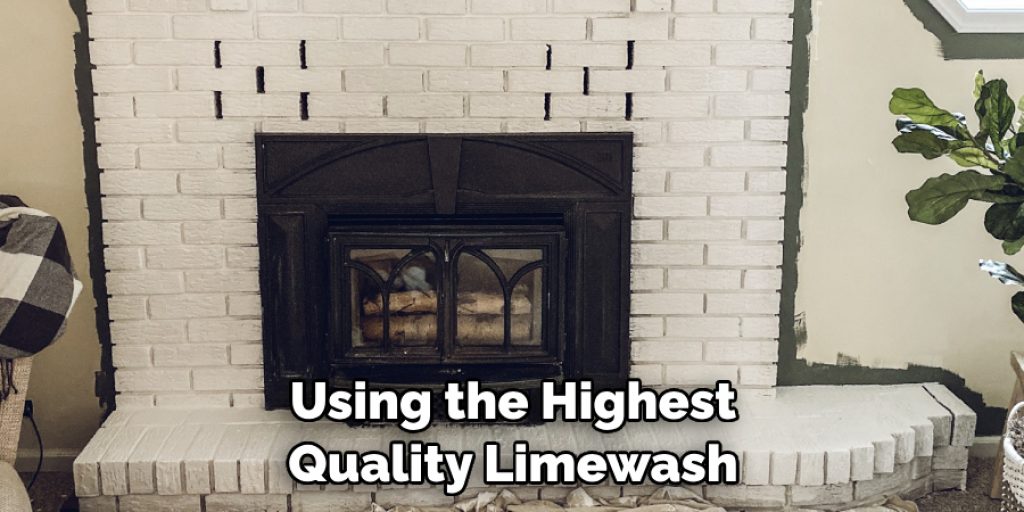
Conclusion
In conclusion, limewashing your brick fireplace can transform the room, adding a bright and unique look to your home. It is an easy process that doesn’t require special tools or equipment, but it takes time and patience to achieve the desired results. Limewash adds color and texture to the brick surface without altering its structure or compromising its integrity.
To get started, it is important to prepare the area, ensuring that any loose mortar or old paint has been removed. Then, mix up a batch of limewash, using either a ready-made solution or a homemade recipe to suit your needs. This article has been beneficial for learning how to limewash brick fireplace. Make Sure the preventive measures are followed chronologically.

